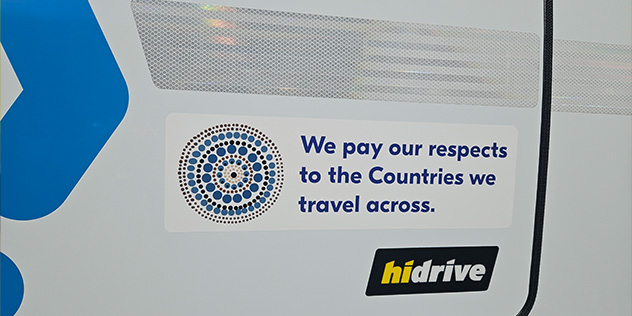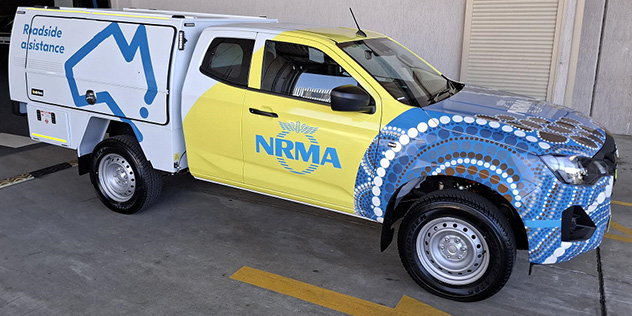
The decision to showcase reconciliation commitments so visibly on NRMA vehicles stems from a clear organisational vision: a future where First Nations culture is rightfully seen, heard and celebrated as part of everyday Australian life.
As NRMA teams travel thousands of kilometres each day to assist members, these moving artworks help start conversations, spark curiosity, and encourage everyone to learn more about the Countries they’re travelling through.
Over time, we begin to remember and recognise these Countries — deepening our connection to the places they travel.
As NAIDOC Week invites us all to celebrate First Nations culture and history, the NRMA is proud to play its part by recognising Country every time a patrol car hits the road. It’s a meaningful way to honour the diverse Countries that make up Australia and the incredible resilience, knowledge and culture of the First Nations peoples who have cared for these lands for tens of thousands of years.
So next time you see an NRMA patrol vehicle come to the rescue - or spot the fully wrapped RAP car travelling along the highway - take a moment to appreciate the deeper story it carries. It’s not just about roadside assistance; it’s about driving forward together on a path toward greater understanding, respect and reconciliation.
Across Australia, NAIDOC Week is a time to celebrate and honour the rich history, culture and achievements of Aboriginal and Torres Strait Islander peoples. It’s also an opportunity for organisations to reflect on how they can contribute to reconciliation – not just during NAIDOC Week, but every day.
This year, the NRMA is taking a bold step forward, proudly displaying its commitment on the roads with special stickers fitted on all roadside patrol vehicles, and a new, fully wrapped vehicle adorned in its Reconciliation Action Plan (RAP) artwork.
The NRMA’s roadside patrol vehicles and tow trucks now feature new stickers carrying a deep message. Far more than decorative, these stickers acknowledge the many different First Nations Countries that NRMA teams travel across every day.
Among them is a dot circle motif, representing communities and the places they meet, drawn from a larger artwork titledCharging Together Towards a New Dreaming, created by Kamilaroi artist Bianca Gardiner-Dodd. Bianca’s piece tells the story of the NRMA’s journey and highlights how we’re all interconnected with each other and with our environment.
By carrying this symbol on every patrol car, the NRMA is sending a message of respect for Country. Spelled with a capital C, ‘Country’ isn’t just land or geography: it’s a living entity that includes waterways, animals, plants, and the profound spiritual connection people have to them all.

Taking this initiative even further, the NRMA has introduced a special patrol vehicle fully wrapped in its RAP artwork. To be seen cruising the streets around Sydney Metro and Dubbo areas, these vehicles serve as a travelling celebration of First Nations cultures and a powerful statement of the NRMA’s reconciliation vision.
The artwork is rich with meaning, weaving together elements like fish scales to represent waterways and ferries, kangaroo tracks to acknowledge the land and native animals, and lightning bolts symbolising energy and the NRMA’s future-focused direction with electric vehicles.
Topographic lines, sand dunes and travel pathways tell stories of journeys across diverse landscapes, echoing the NRMA’s own mission to keep Australians moving safely and confidently.
Every swirl, dot, and pattern contributes to a bigger picture and is a visual representation of over 60,000 years of First Nations knowledge, history, and ancestry intertwined with more than 100 years of NRMA’s history and service.
